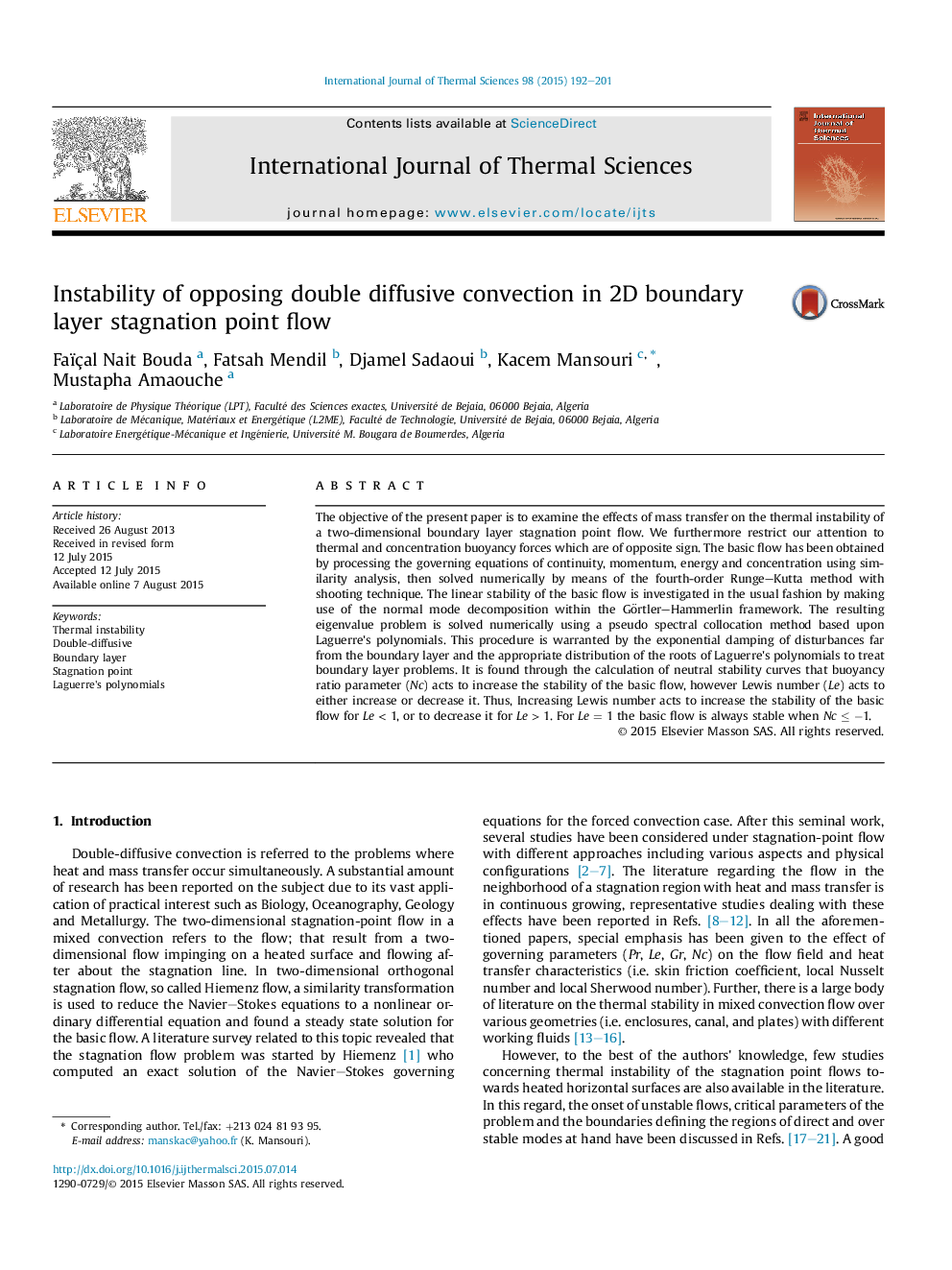| Article ID | Journal | Published Year | Pages | File Type |
|---|---|---|---|---|
| 667987 | International Journal of Thermal Sciences | 2015 | 10 Pages |
•The new method of two-dimensional double diffusive stagnation point flow with opposing temperature and concentration gradients is investigated.•The resulting eigenvalue problem is solved by using a pseudo spectral collocation method based upon Laguerre's functions.•A stability analysis reveals that mass transfer acts to increase the stability of the basic flow.
The objective of the present paper is to examine the effects of mass transfer on the thermal instability of a two-dimensional boundary layer stagnation point flow. We furthermore restrict our attention to thermal and concentration buoyancy forces which are of opposite sign. The basic flow has been obtained by processing the governing equations of continuity, momentum, energy and concentration using similarity analysis, then solved numerically by means of the fourth-order Runge–Kutta method with shooting technique. The linear stability of the basic flow is investigated in the usual fashion by making use of the normal mode decomposition within the Görtler–Hammerlin framework. The resulting eigenvalue problem is solved numerically using a pseudo spectral collocation method based upon Laguerre's polynomials. This procedure is warranted by the exponential damping of disturbances far from the boundary layer and the appropriate distribution of the roots of Laguerre's polynomials to treat boundary layer problems. It is found through the calculation of neutral stability curves that buoyancy ratio parameter (Nc) acts to increase the stability of the basic flow, however Lewis number (Le) acts to either increase or decrease it. Thus, Increasing Lewis number acts to increase the stability of the basic flow for Le < 1, or to decrease it for Le > 1. For Le = 1 the basic flow is always stable when Nc ≤ −1.
